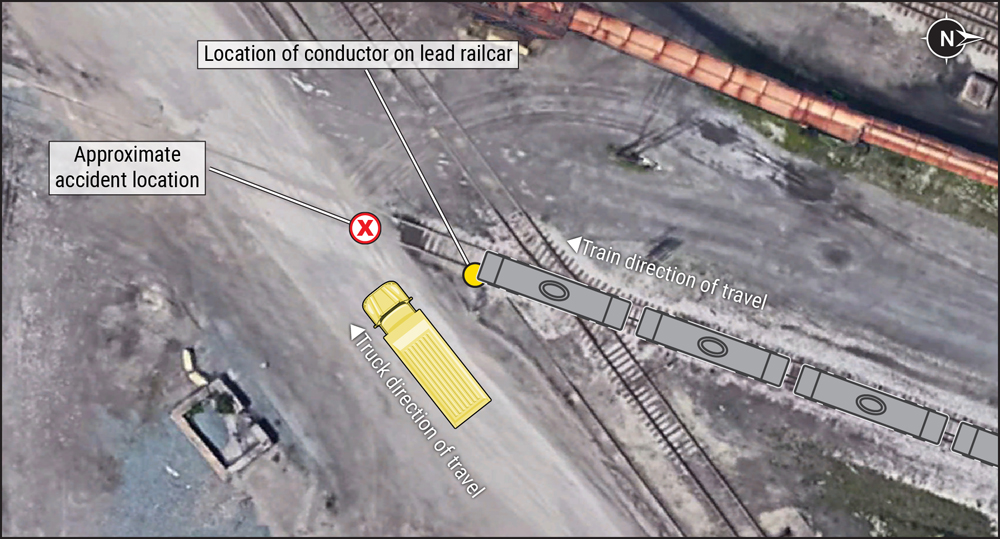
WASHINGTON — The conductor of a Norfolk Southern train was killed earlier this month when the freight car he was riding in a shoving move and a dump truck “simultaneously entered” a private grade crossing at a Cleveland steel mill, pinning the conductor between the railcar and dump truck, according to the National Transportation Safety Board preliminary report released Monday.
That accident, at about 1:08 a.m. on March 7, occurred at the Cleveland-Cliffs plant in Cleveland [see “Norfolk Southern employee killed …,” Trains News Wire, March 7, 2023]. As the latest in a series of accidents involving Norfolk Southern, it played a part in investigations into NS safety practices announced later that day by both the NTSB and Federal Railroad Administration.
The victim was later identified as 46-year-old Louis Shuster of Broadview Heights, Ohio, president of Brotherhood of Locomotive Engineers and Trainment Division 607 in Cleveland.
Preliminary reports establish basic facts of an accident and are subject to revision. Probable cause will be determined in the final report. The report issued Monday indicates the train of one locomotive and 12 railcars was traveling at 9 mph at the time of the accident, within the plant speed limit of 10 mph. Security camera data indicates the dump truck stopped at the crossing before the collision and then proceeded.
The accident has led the FRA to issue a safety advisory on shoving-move practices [see “FRA issues safety bulletin on shoving moves …,” News Wire, March 17, 2023].
The NTSB indicates its ongoing investigation will focus on industry-wide practices for conductors riding equipment through grade crossings and Cleveland-Cliffs methods of protection at private grade crossings.






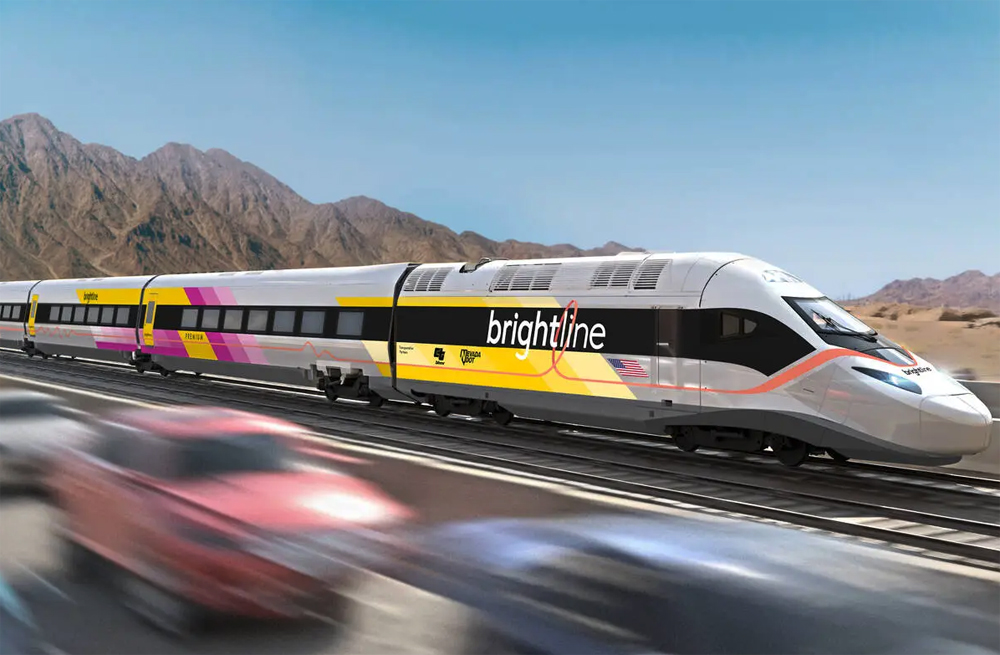
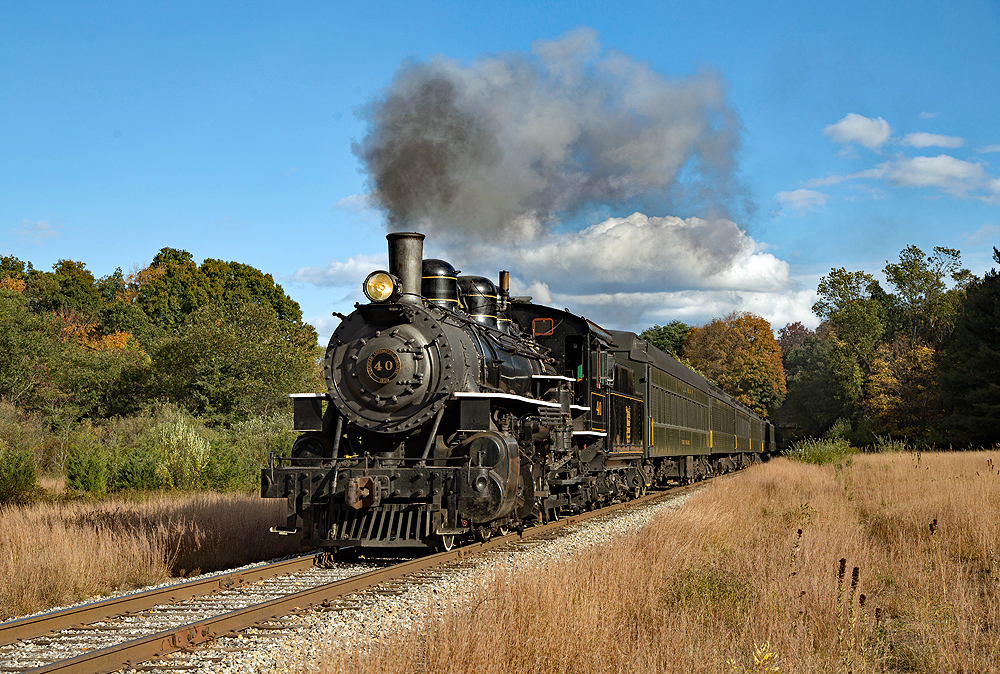
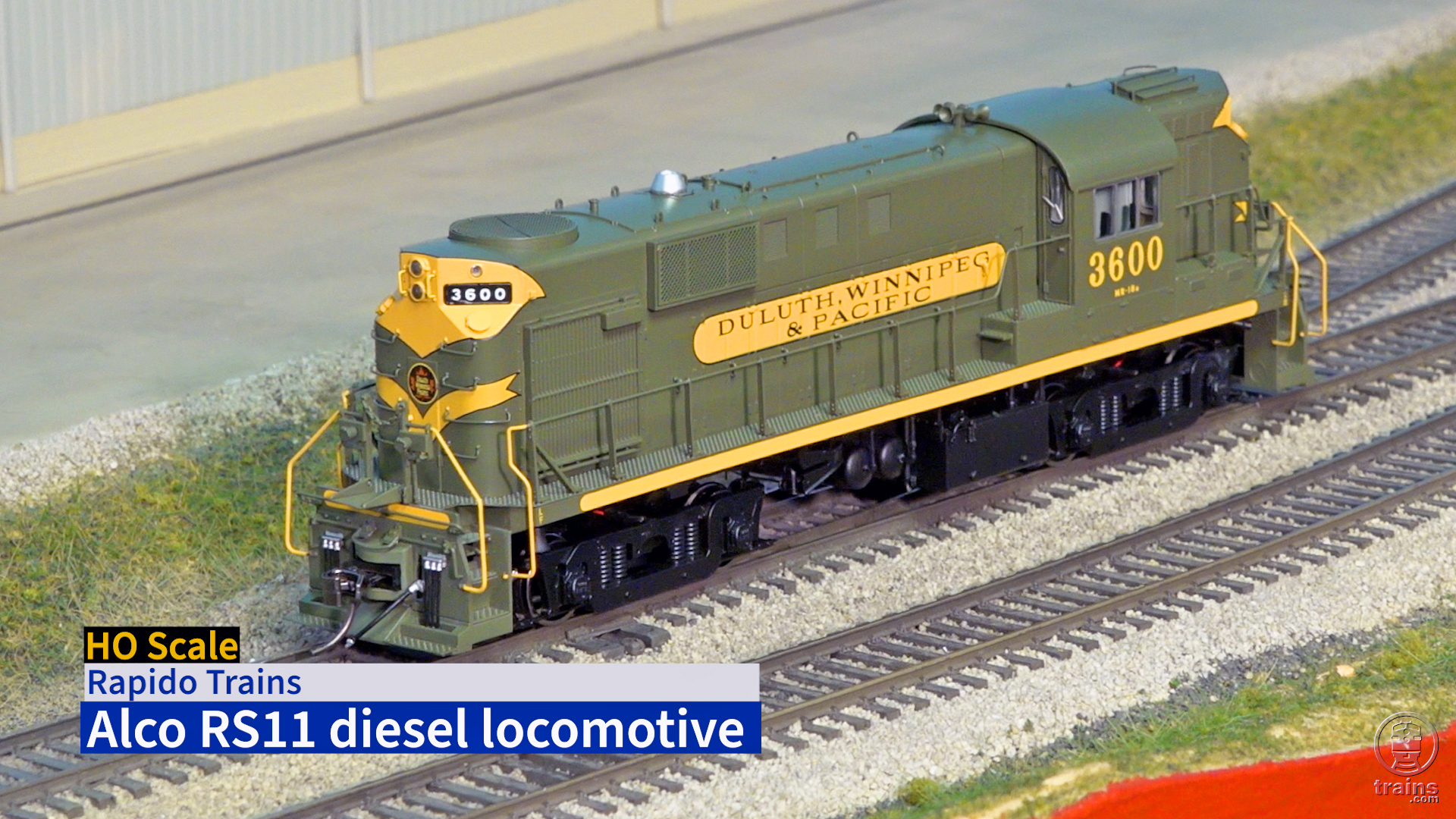
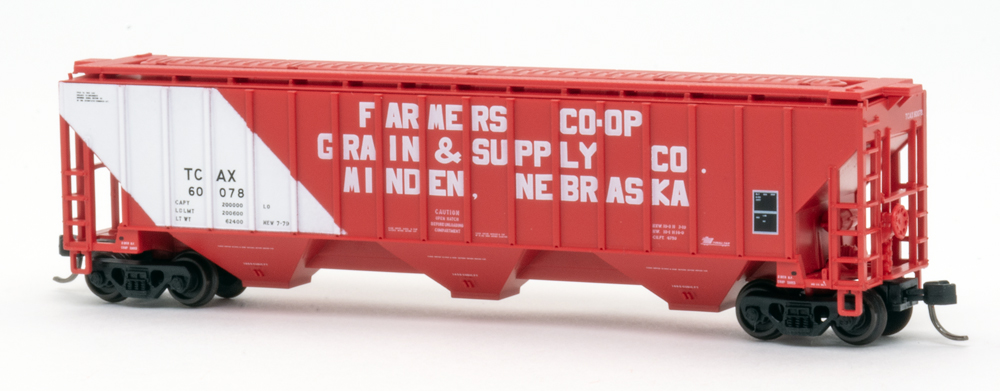




all he needed is a Canned Air Horn there loud enough for the truck to hear
Train was moving right into the blind spot of the truck – draw a perpendicular line from the cab out to the track in the photo – no line of sight were the two were at. Driver had a line of sight to the train as it approached, but loses it when the truck inched past the front of the train – where it would be close enough to gauge a motion of the train. Truck’s mirror was of little help due to the angle of approach. Driver probably had no idea the cars were moving and by the time he did the collision was inevitable, even at what could have been slow speeds. The two objects hit the same mark at the same time.
As for the conductor, it can only be that he didn’t have enough time to react (how much peripheral sight line does a conductor have in that setup?) or he assumed the truck would stop, also reducing the amount of time to react.
Seems like it could be easily cured with a blinding flashing light hung from the shoved car. Also cured by straightening the crossing. It looks like there is room to do so.
NTSB is focusing on the definition of ‘Track is clear’ in 218.93 when it comes to shoving. There’s a huge misunderstanding of the requirements of shoves and grade crossings. Railroads don’t want to address it and railroaders assume they have the right of way at all crossings. Motorists expect to see headlights and hear a horn, not expectating a black tank car coming out of the night with just a switchman’s lantern for illumination.
This is another fallen rail like the previous in TX, AR and IL that were all shoves at crossings with conductor fatalities. No blame intended, just the unfortunate aftermath of a mistake in a dangerous industry.
Since this is pointing a finger at the deceased, please forgive me. The NTSB mentioned in the preliminary notice, radio contact w/engineer. More than once i have heard the “shove rider” radio ‘crossing clear” to the engineer. Unless the truck was electric and made no noise, even headlights in the dark (acute angle of grade crossing and rail aside). The conductor was on the line of sight side of the car and not the opposite side to be blinded. endmrw0322231646
I don’t think the deceased is being blamed at all Mike. Unfortunately he probably seen and knew what was about to happen and there was no time to react.
There is absolutely no doubt the truck ran into the tank car.
The problem as I see it is probably a procedural issue within the steel mill. In the mill I worked in, the rail traffic always stopped before crossing the road, even when the there was a stop sign for the rail line as in this accident.
Then the engineer (single crew radio control) flagged the crossing with their switchman’s light.
Most of our crossings were well lit, however once you got really deep into the blast furnace area it was always dark with reflective stuff floating in the air, it was difficult to see the rail cars, and there was lots of crossings at the angle similar to this one.
In my 41 years I cannot recall a serious incident between a train and a vehicle, so flagging worked for us.
Look at the angle of the crossing. The train was behind the truck driver’s right shoulder, in the dark (1:08 AM), likely a black tank car with no lights. That’s a perfect setup for an accident.
Indeed, an unfortunate accident.
Unless you’ve been in a steel mill in the dead of night you would not understand now dangerous a place it can be.
Travelling 9 mph is 13 feet per second so indeed at that crossing angle it would only be a very few seconds for the collision to occur.
If the train was moving at 9mph, it must have almost been inside the grade crossing when the truck started across. How on earth did the driver not see it, or did he think his truck could beat it as slowly as it was going?
May be hard to see a black tank car in the dark.